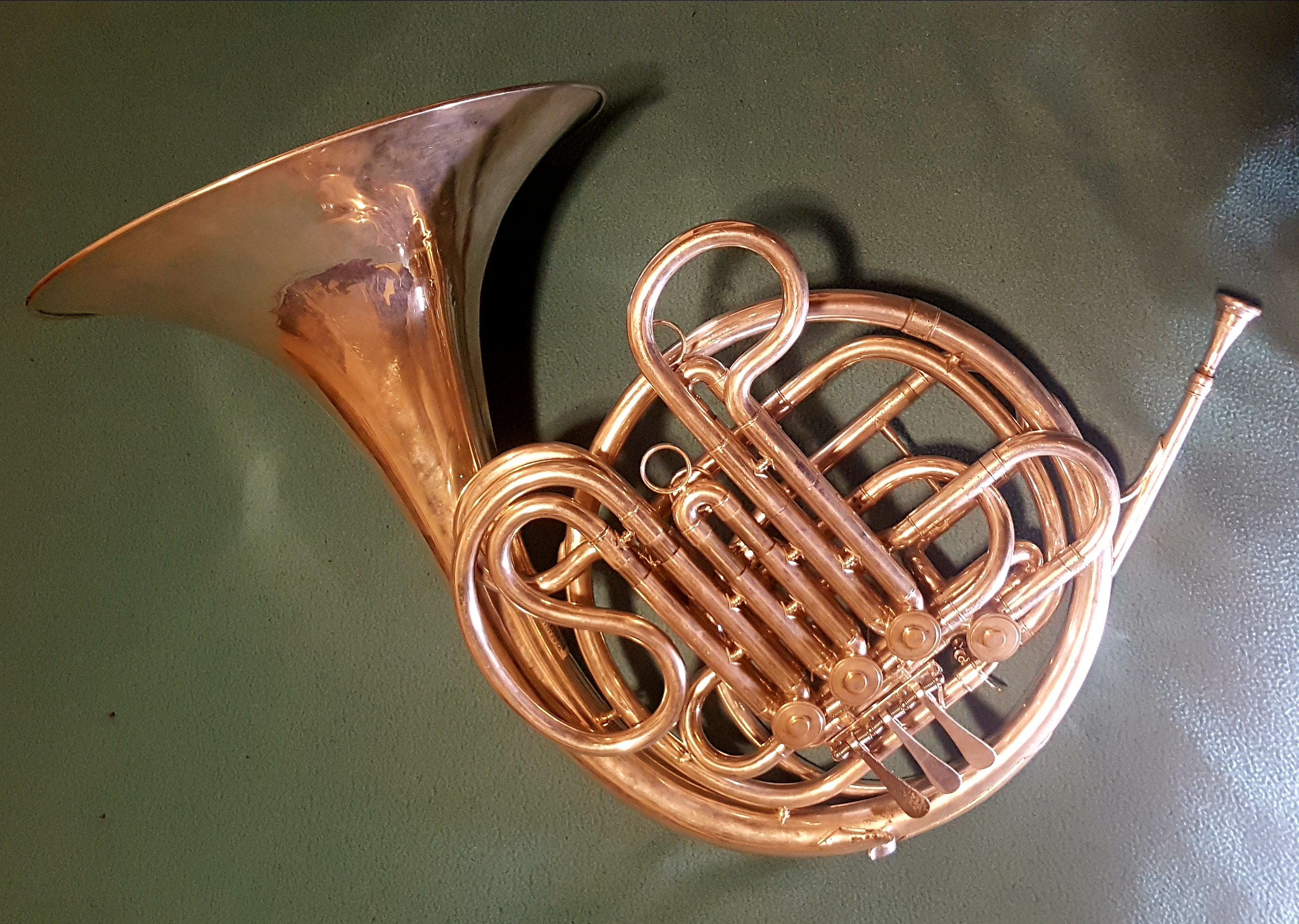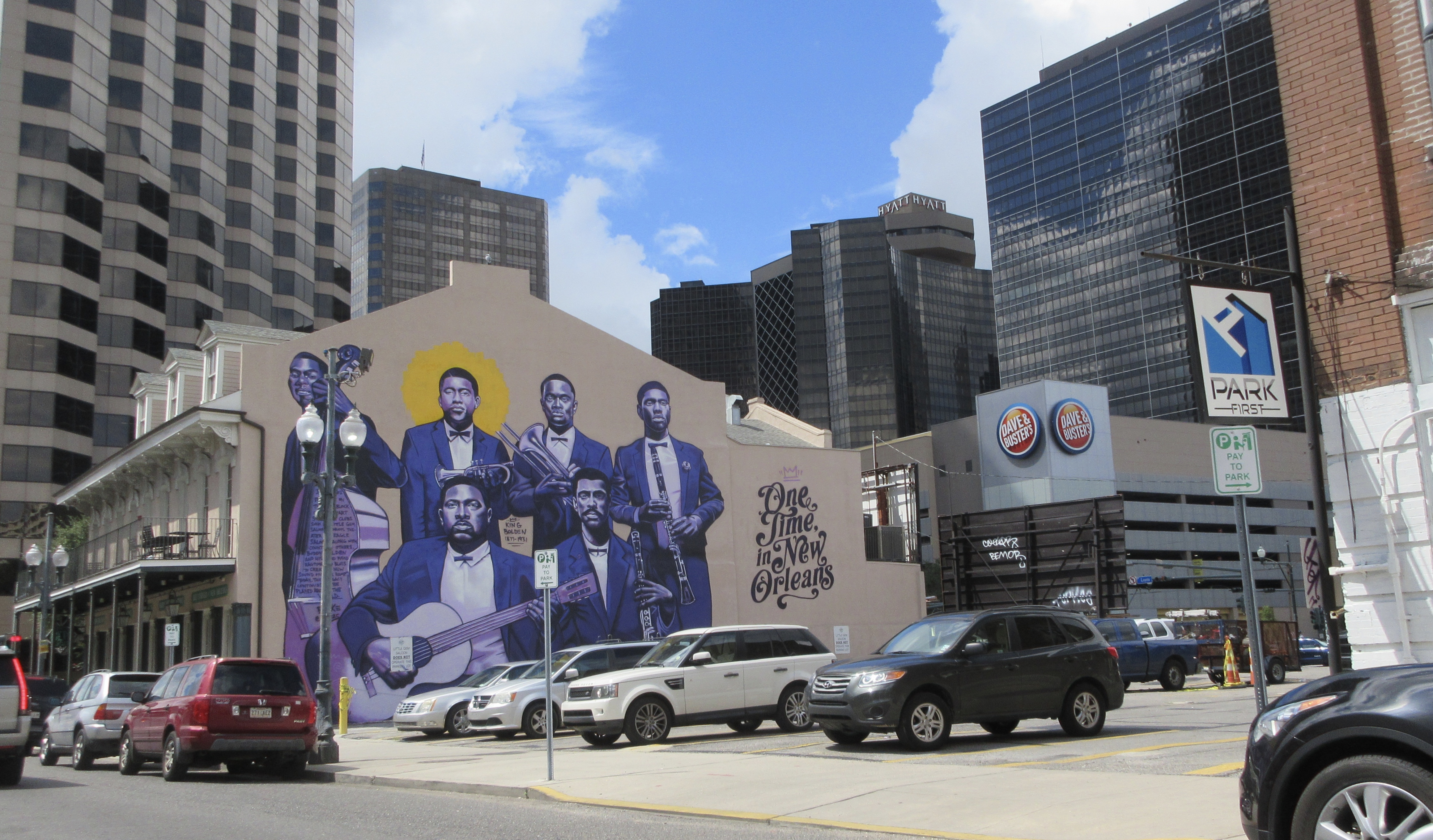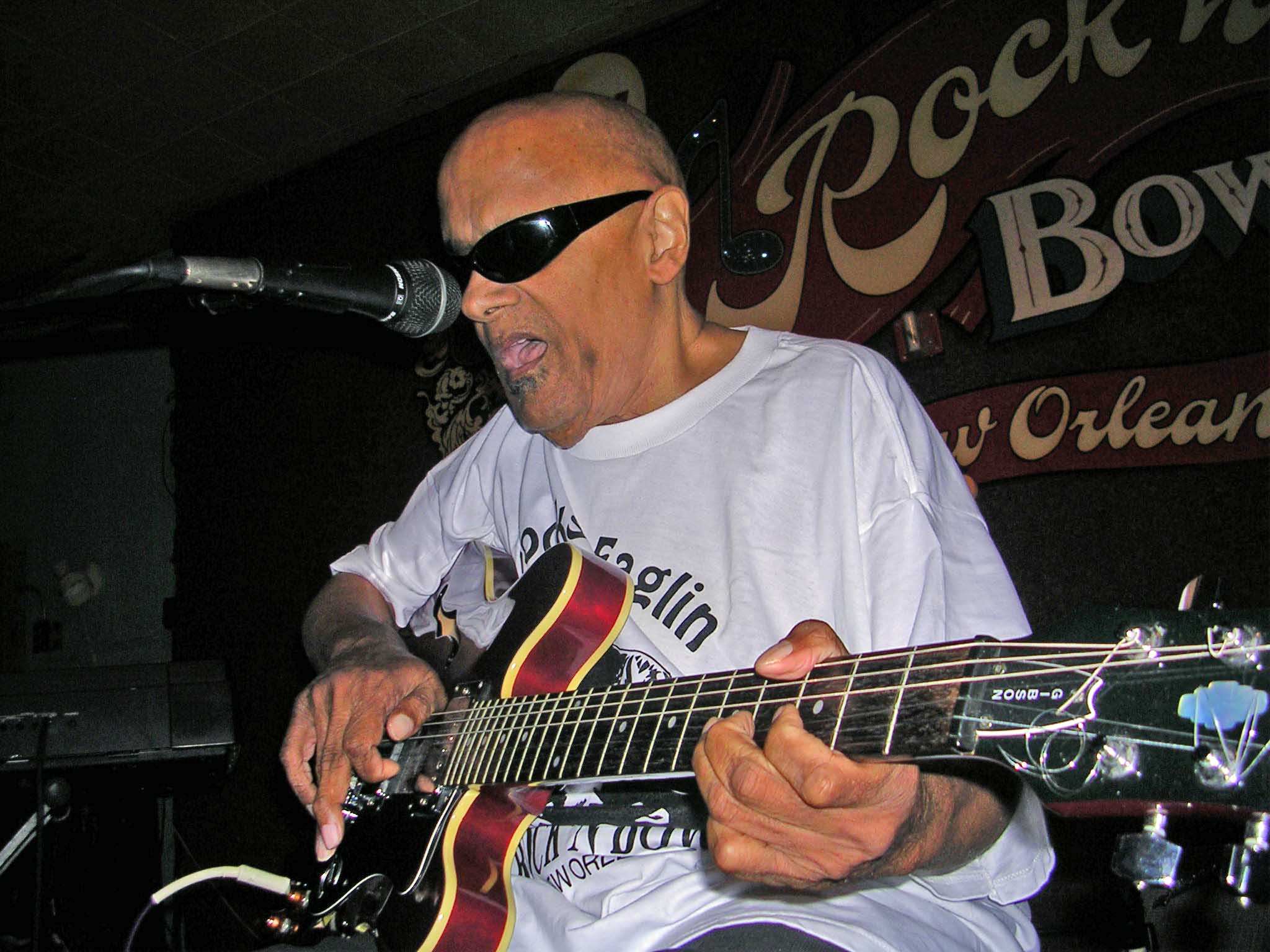New Orleans blues on:
[Wikipedia]
[Google]
[Amazon]
New Orleans blues is a subgenre of
 New Orleans is generally credited as the birthplace of jazz music, but has attracted less attention as a center of the blues. The
New Orleans is generally credited as the birthplace of jazz music, but has attracted less attention as a center of the blues. The  Other significant figures playing keyboard-based blues include James Booker, whose organ instrumental "Gonzo" reached the top 50 in the ''Billboard'' chart in 1960 and was followed by a series of minor single hits.Raeburn, B. B., "James Booker", in V. Bogdanov, C. Woodstra, S. T. Erlewine, eds, ''All Music Guide to the Blues: The Definitive Guide to the Blues'' (Milwaukee, WI: Backbeat Books, 3rd edn, 2003), , p. 62.
The most significant blues guitarist to emerge from the city in the post-World War II period was Guitar Slim, originally from the
Other significant figures playing keyboard-based blues include James Booker, whose organ instrumental "Gonzo" reached the top 50 in the ''Billboard'' chart in 1960 and was followed by a series of minor single hits.Raeburn, B. B., "James Booker", in V. Bogdanov, C. Woodstra, S. T. Erlewine, eds, ''All Music Guide to the Blues: The Definitive Guide to the Blues'' (Milwaukee, WI: Backbeat Books, 3rd edn, 2003), , p. 62.
The most significant blues guitarist to emerge from the city in the post-World War II period was Guitar Slim, originally from the  The careers of many New Orleans bluesmen declined in the 1960s, as rock and roll and soul began to dominate popular music, but revived in the 1970s, when there was renewed interest in their recordings.
The careers of many New Orleans bluesmen declined in the 1960s, as rock and roll and soul began to dominate popular music, but revived in the 1970s, when there was renewed interest in their recordings.
blues
Blues is a music genre and musical form which originated in the Deep South of the United States around the 1860s. Blues incorporated spirituals, work songs, field hollers, shouts, chants, and rhymed simple narrative ballads from the Afr ...
that developed in and around the city of New Orleans
New Orleans ( , ,New Orleans
Merriam-Webster. ; french: La Nouvelle-Orléans , es, Nuev ...
, influenced by jazz and Caribbean music. It is dominated by piano and saxophone, but also produced guitar bluesmen.
Merriam-Webster. ; french: La Nouvelle-Orléans , es, Nuev ...
Characteristics
As a style, New Orleans blues is primarily driven by piano and horn, enlivened byCaribbean
The Caribbean (, ) ( es, El Caribe; french: la Caraïbe; ht, Karayib; nl, De Caraïben) is a region of the Americas that consists of the Caribbean Sea, its islands (some surrounded by the Caribbean Sea and some bordering both the Caribbean Se ...
rhythms and Dixieland music. It is generally cheerful in delivery regardless of the subject, with a laid back tempo and complex rhythms falling just behind the beat. Vocals range from laid-back crooning to full-throated gospel shouting.
History
 New Orleans is generally credited as the birthplace of jazz music, but has attracted less attention as a center of the blues. The
New Orleans is generally credited as the birthplace of jazz music, but has attracted less attention as a center of the blues. The 12-bar blues
The 12-bar blues (or blues changes) is one of the most prominent chord progressions in popular music. The blues progression has a distinctive form in lyrics, phrase, chord structure, and duration. In its basic form, it is predominantly based on ...
were well known in the city before most of the rest of the country. Buddy Bolden's band was remembered at excelling on playing blues before 1906. Anthony Maggio's "I Got the Blues
"I Got the Blues" is a song recorded by the Rolling Stones. Written by Mick Jagger and Keith Richards, it appears on their 1971 album ''Sticky Fingers''. It is a slow-paced, bluesy song featuring languid guitars with heavy blues and soul influenc ...
" was an early example of published blues sheet music from 1908. The Original Dixieland Jass Band's "Livery Stable Blues
"Livery Stable Blues" is a jazz composition copyrighted by Ray Lopez ''(né'' Raymond Edward Lopez; 1889–1979) and Alcide Nunez in 1917. It was recorded by the Original Dixieland Jass Band on February 26, 1917, and, with the A side " Dixieland ...
", generally considered the first jazz record, is in a fast blues form.
Although New Orleans has drawn to it and produced fewer blues musicians than other major US urban centers with large African-American populations, it has been the center of a distinctive form of blues music, which has been pursued by some notable musicians and produced important recordings,Unterberger, R., "Louisiana blues", in V. Bogdanov, C. Woodstra, S. T. Erlewine, eds, ''All Music Guide to the Blues: The Definitive Guide to the Blues'' (Milwaukee, WI: Backbeat Books, 3rd edn, 2003), , pp. 687–8. such as Professor Longhair and Guitar Slim, who both had regional, R&B and even mainstream chart hits.
In the period after World War II, a very large number of recordings were produced in the city that were informed by the blues, but had strong R&B and pop influences that anticipated rock and roll
Rock and roll (often written as rock & roll, rock 'n' roll, or rock 'n roll) is a Genre (music), genre of popular music that evolved in the United States during the late 1940s and early 1950s. It Origins of rock and roll, originated from Africa ...
and are difficult to classify. Among these artists, the most highly regarded and most influenced by the blues was piano-player Professor Longhair, whose signature song "Mardi Gras in New Orleans" (1949) and other recordings such as " Tipitina" (1959) were major R&B hits, and who remained a central figure in New Orleans music through to his death in 1980.
 Other significant figures playing keyboard-based blues include James Booker, whose organ instrumental "Gonzo" reached the top 50 in the ''Billboard'' chart in 1960 and was followed by a series of minor single hits.Raeburn, B. B., "James Booker", in V. Bogdanov, C. Woodstra, S. T. Erlewine, eds, ''All Music Guide to the Blues: The Definitive Guide to the Blues'' (Milwaukee, WI: Backbeat Books, 3rd edn, 2003), , p. 62.
The most significant blues guitarist to emerge from the city in the post-World War II period was Guitar Slim, originally from the
Other significant figures playing keyboard-based blues include James Booker, whose organ instrumental "Gonzo" reached the top 50 in the ''Billboard'' chart in 1960 and was followed by a series of minor single hits.Raeburn, B. B., "James Booker", in V. Bogdanov, C. Woodstra, S. T. Erlewine, eds, ''All Music Guide to the Blues: The Definitive Guide to the Blues'' (Milwaukee, WI: Backbeat Books, 3rd edn, 2003), , p. 62.
The most significant blues guitarist to emerge from the city in the post-World War II period was Guitar Slim, originally from the Delta
Delta commonly refers to:
* Delta (letter) (Δ or δ), a letter of the Greek alphabet
* River delta, at a river mouth
* D (NATO phonetic alphabet: "Delta")
* Delta Air Lines, US
* Delta variant of SARS-CoV-2 that causes COVID-19
Delta may also re ...
. His " The Things That I Used to Do", which combined gospel
Gospel originally meant the Christian message ("the gospel"), but in the 2nd century it came to be used also for the books in which the message was set out. In this sense a gospel can be defined as a loose-knit, episodic narrative of the words an ...
, blues and R&B, was a major R&B hit in 1954 and may have influenced the development of later soul music
Soul music is a popular music genre that originated in the African American community throughout the United States in the late 1950s and early 1960s. It has its roots in African-American gospel music and rhythm and blues. Soul music became po ...
. It also influenced the development of rock music
Rock music is a broad genre of popular music that originated as " rock and roll" in the United States in the late 1940s and early 1950s, developing into a range of different styles in the mid-1960s and later, particularly in the United States an ...
, having been included in'' The Rock and Roll Hall of Fame's 500 Songs that Shaped Rock and Roll'', featuring an electric guitar
An electric guitar is a guitar that requires external amplification in order to be heard at typical performance volumes, unlike a standard acoustic guitar (however combinations of the two - a semi-acoustic guitar and an electric acoustic gui ...
solo with distorted overtones.
Other important blues guitarists from the city include Snooks Eaglin, who recorded both acoustic folk and electric-based R&B, and Earl King, who composed blues standards including " Come On" (covered by Jimi Hendrix
James Marshall "Jimi" Hendrix (born Johnny Allen Hendrix; November 27, 1942September 18, 1970) was an American guitarist, singer and songwriter. Although his mainstream career spanned only four years, he is widely regarded as one of the most ...
and Stevie Ray Vaughan
Stephen Ray Vaughan (October 3, 1954 – August 27, 1990) was an American musician, best known as the guitarist and frontman of the blues rock trio Stevie Ray Vaughan and Double Trouble. Although his mainstream career spanned only seven years, ...
) and Professor Longhair's "Big Chief
"Big Chief" is a song composed by Earl King in the early 1960s. It became a hit in New Orleans for Professor Longhair in 1964,Berry/Foose/Jones, ''Up from the Cradle of Jazz''. University of Louisiana at Lafayette Press, 2009, p. 148. featuring a ...
".Downs, T., and J. T. Edge, ''New Orleans'' (London: Lonely Planet, 3rd edn, 2003), , p. 28. Also among the major figures of the genre was Dr. John
Malcolm John Rebennack Jr. (November 20, 1941 – June 6, 2019), better known by his stage name Dr. John, was an American singer and songwriter. His music encompassed New Orleans blues, jazz, funk, and R&B.
Active as a session musician from t ...
, who began as a guitarist and enjoyed regional success with the Bo Diddley-influenced "Storm Warning" in 1959, and had a highly successful career from the 1960s after moving to Los Angeles, mixing R&B with psychedelic rock
Psychedelic rock is a rock music Music genre, genre that is inspired, influenced, or representative of psychedelia, psychedelic culture, which is centered on perception-altering hallucinogenic drugs. The music incorporated new electronic sound ...
and using New Orleans-themed aesthetics.Unterberger, R., "Dr. John", in V. Bogdanov, C. Woodstra, S. T. Erlewine, eds, ''All Music Guide to the Blues: The Definitive Guide to the Blues'' (Milwaukee, WI: Backbeat Books, 3rd edn, 2003), , p. 157.
 The careers of many New Orleans bluesmen declined in the 1960s, as rock and roll and soul began to dominate popular music, but revived in the 1970s, when there was renewed interest in their recordings.
The careers of many New Orleans bluesmen declined in the 1960s, as rock and roll and soul began to dominate popular music, but revived in the 1970s, when there was renewed interest in their recordings.
See also
* Steamboat WillieNotes
{{Louisianarootsmusic Blues music genres African-American music Music of New Orleans